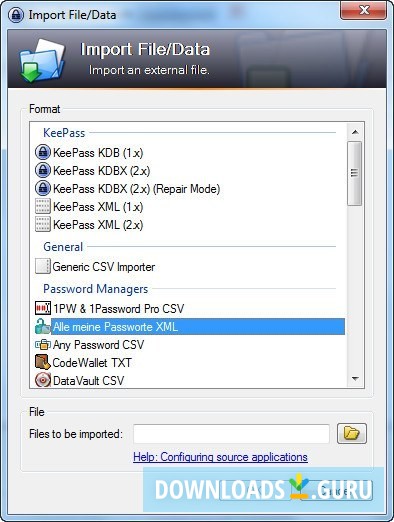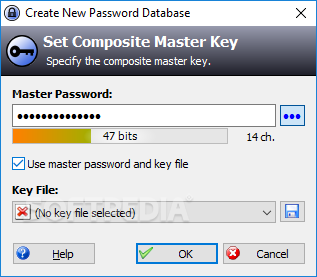

This is a private non-commercial web site. The source code is licensed under the MIT license. No need to have cloud storage provider’s native client be installed.No need for technical configuration entries in a database.Deep integration into KeePass’ core functions (synchroniziation, triggers, scripting, etc.).
 Access to cloud stored databases via URL (“Open from URL”/”Save to URL”). Open/Save databases with a feature rich user interface. Support for multiple accounts for each cloud storage provider. Support for multiple cloud storage providers. Supported providers (in alphabetical order): This covers all kind of users: novices, experienced and power users. The main goal is to offer a simple UI while integrating deeply into KeePass. KeeAnywhere is a KeePass Password Safe plugin that provides access to cloud storage providers (cloud drives). Dropbox-Accounts have to be re-authenticated. Sync all offline-files before deleting your account! OneDrive-Accounts have to be deleted and recreated. It then states, that you can close this window (= tab) now. After logging in and accepting the terms of your account, it redirects to “localhost” (with changing ports). Authorization now takes place in your system’s default browser. The databases are encrypted using the best and most secure encryption algorithms currently known (AES and Twofish).KeeAnywhere A cloud storage provider plugin for KeePass Password Safe Download v2.0.3 Found a bug? View on GitHub Noteworthy for updates from 1.x to 2.x: So you only have to remember one single master password or select the key file to unlock the whole database. You can put all your passwords in one database, which is locked with one master key or a key file. KeePass is a free open source password manager, which helps you to manage your passwords in a secure way. The thief would have access to your e-mail account, website, etc. Because if you use only one password everywhere and someone gets this password you have a problem. Also, you should use different passwords for each account. You need a password for the Windows network logon, your e-mail account, your website's FTP password, online passwords (like website member account), etc. Today you need to remember many passwords.
Access to cloud stored databases via URL (“Open from URL”/”Save to URL”). Open/Save databases with a feature rich user interface. Support for multiple accounts for each cloud storage provider. Support for multiple cloud storage providers. Supported providers (in alphabetical order): This covers all kind of users: novices, experienced and power users. The main goal is to offer a simple UI while integrating deeply into KeePass. KeeAnywhere is a KeePass Password Safe plugin that provides access to cloud storage providers (cloud drives). Dropbox-Accounts have to be re-authenticated. Sync all offline-files before deleting your account! OneDrive-Accounts have to be deleted and recreated. It then states, that you can close this window (= tab) now. After logging in and accepting the terms of your account, it redirects to “localhost” (with changing ports). Authorization now takes place in your system’s default browser. The databases are encrypted using the best and most secure encryption algorithms currently known (AES and Twofish).KeeAnywhere A cloud storage provider plugin for KeePass Password Safe Download v2.0.3 Found a bug? View on GitHub Noteworthy for updates from 1.x to 2.x: So you only have to remember one single master password or select the key file to unlock the whole database. You can put all your passwords in one database, which is locked with one master key or a key file. KeePass is a free open source password manager, which helps you to manage your passwords in a secure way. The thief would have access to your e-mail account, website, etc. Because if you use only one password everywhere and someone gets this password you have a problem. Also, you should use different passwords for each account. You need a password for the Windows network logon, your e-mail account, your website's FTP password, online passwords (like website member account), etc. Today you need to remember many passwords.






 0 kommentar(er)
0 kommentar(er)
